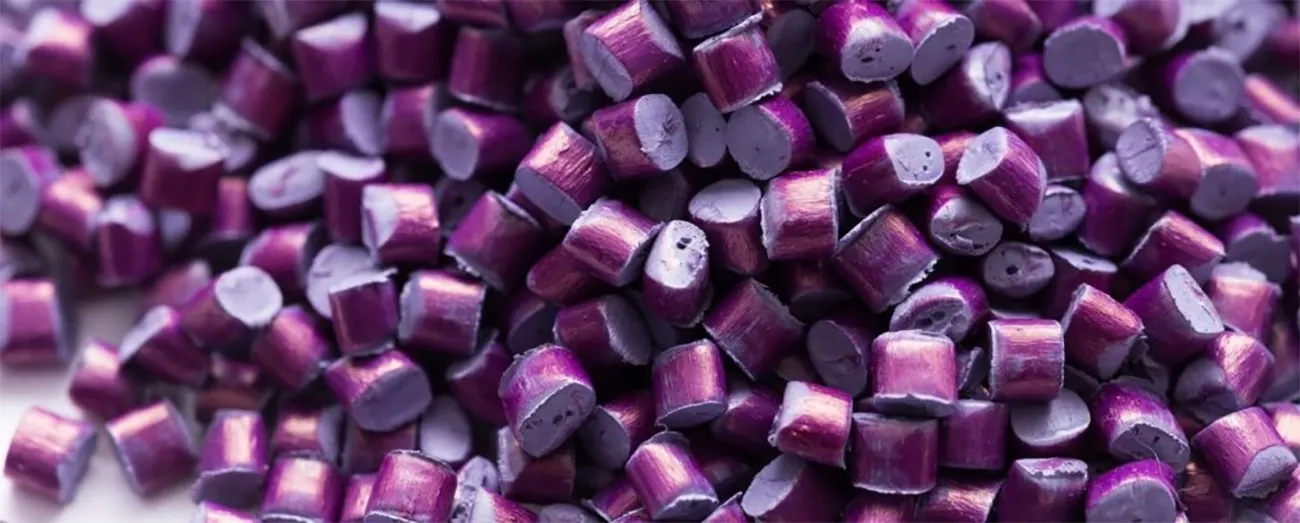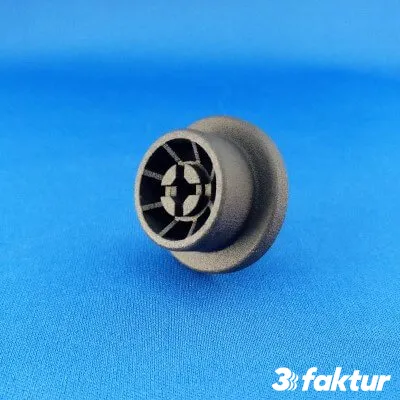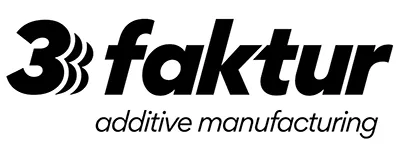
Among the plastics used in 3D printing, polyamides (short: PA) hold a prominent position. The most well-known among them are PA 6, PA 11, and especially PA 12. In this article, we provide a brief overview of what polyamides are, the types of polyamides available, and other polymers used in 3D printing.
Polyamides
This group of plastics is versatile and finds application in diverse industries such as the textile industry, medical technology, and automotive manufacturing.
Chemically, they consist of very long chains of molecules. These chains are made up of repeating units (called monomers) linked together by amide bonds. The term polyamide, in simplified terms, means nothing other than “many amides.”
A distinctive feature of polyamides is their linear structure and the fact that the chains are not cross-linked. Therefore, polyamides belong to thermoplastics. These are characterized by their ability to be molded by heat and retain the new shape upon cooling. This process can be repeated by reapplying heat. This distinguishes thermoplastics from thermosets (polyurethane, epoxy, etc.), where the addition of heat leads to the destruction of the structure.
In the family of polyamides, the building blocks (monomers) determine the properties of each polyamide. The popular PA 6 is made from caprolactam, while PA 12 is made from laurolactam or ω-aminododecanoic acid. The number indicates the number of carbon atoms (‘C’) in the monomer, for example, 6 in PA 6 or 12 in PA 12. The polyamides relevant for 3D printing are PA 6; PA 6.6; PA 11, and especially PA 12 in powder printing.



Examples of 3D-printed polyamide components. Left & middle: Multi Jet Fusion parts in HP HR PA 12; Left a laser sintered part in PA2200 (PA 12).
Overview of the main polyamides
PA 6
PA 6 (Perlon) was developed as a mimic product for PA 6.6 (Nylon) to benefit from the properties of the original without needing to purchase the patented product itself. PA 6 is manufactured through ring-opening polymerization of ε-caprolactam.
Properties:
It is a very tough material with high tensile strength and elasticity. Additionally, it is abrasion-resistant and characterized by high chemical resistance (acids and alkalis).
Applications:
Its primary application is in the production of weavable yarns and industrial textiles. PA 6 can also be used as a “substitute” for metallic materials.
Structural formula:

PA 6.6
PA 6.6 is essentially the genuine (original) nylon. The chemical structure of PA 6 and PA 6.6 is similar. The only difference lies in a –CH2–NH–CO- group that is mirrored, giving both plastics similar physical properties. However, the modulus of elasticity and crystallinity of PA 6.6 are higher due to the existing point symmetry. The plastic is produced through polycondensation of hexamethylenediamine and adipic acid.
Properties:
Objects made of PA 6.6 exhibit high strength and toughness as well as good stability even under heat influence. Furthermore, it is used whenever high chemical resistance is required. Additionally, the material is characterized by its low gas and vapor permeability.
Application:
PA 6.6 is a popular material for food packaging. Its main application area is the production of weavable yarns and industrial textiles. However, items subjected to high mechanical and thermal stresses (plain bearings, gears, etc.) are also made of PA 6.6.
Structural formula:

PA 11
The basic material for the production of PA 11 is castor oil. It is a linear and partially crystalline plastic, belonging to the group of homopolymers.
Properties:
Polyamide 11 is physiologically harmless and autoclavable at temperatures above 121°C. Furthermore, it can be sterilized by gamma radiation or with ethylene oxide. The material is dimensionally stable and resistant to both chemical and mechanical influences.
Applications:
The properties of PA 11 enable its use in medical areas (e.g., catheters, blood bags, etc.) as well as for the production of hoses and tubes, and it is even suitable for hydraulic applications.
Structural formula:

PA 12
The lightest among polyamide plastics is also a partially crystalline, linear plastic, with a density just over 1 after processing.
Properties:
PA 12 is tissue-compatible, dimensionally stable, and characterized by high resistance to chemicals; moreover, it is less susceptible to stress cracking.
Applications:
PA 12 is increasingly used in the production of prosthetics, as well as for pressure- and impact-resistant fuel lines in automotive and aircraft manufacturing. In 3D printing, mainly PA 12 is used (e.g., HP Multi Jet Fusion – PA 12).
Structural formula:

Relevance for 3D printing
While all polyamides are highly significant for the production of plastic objects, PA 12 has gained outstanding importance for 3D printing. The polyamide is used for 3D printing processes such as selective laser sintering (SLS) and HP Multi Jet Fusion. Both processes are powder bed methods, which exhibit significantly higher productivity compared to other 3D printing technologies.
The resulting lower piece prices, combined with the achieved high quality of the components (dimensional stability, mechanical, and chemical resistance), lead to a consistently high and growing demand for this 3D printing material.
3D printer HP Multi Jet Fusion 4200 for processing PA 12 (Photo: HP Inc.).
The system processes PA 12, PA 12 compounds (e.g., with glass beads), as well as PA 11. The raw material is powdered (particle size approx. 60 µm) and is fused layer by layer during the printing process. More about this process can be found here: HP Multi Jet Fusion at 3Faktur.
Other important plastics in the industrial sector
The plastic family of polyamides includes some of the most significant engineering plastics. However, other plastics also play an important role in industrial applications. Below, we have compiled a brief overview of other important polymers (POM; PP; PC; ABS).
POM
Polyoxymethylene:
- high strength, rigidity, and hardness (wide temperature range)
- low friction coefficient and high abrasion resistance
- high heat resistance
- low water absorption
Importance for 3D printing:
POM can be used for the FDM process. However, the material is currently only used to a limited extent in 3D printing.

Structural formula POM
PC
Polycarbonate:
- almost amorphous high-performance plastic
- not solvent-resistant
- high fracture and impact resistance
- almost transparent, permanently printable
Importance for 3D printing:
Similar to POM, PC can be used for the FDM process. However, polycarbonate currently plays a subordinate role in 3D printing.

Structural formula PC, R = Rest
PP
Polypropylene:
- in pure form, the lightest and hardest plastic
- physiologically harmless
- economically manufacturable
- versatile – various technical parameters producible
Importance for 3D printing:
Can be used in powder form (partially crystalline), hence suitable for Selective Laser Sintering and soon also for Multi Jet Fusion. Its importance is increasing rapidly and sustainably.

Structural formula PP
ABS
Acrylonitrile-Butadiene-Styrene:
- easily processable (gluing, welding, machining)
- good mechanical damping and sound insulation
- available in various colors
- high impact strength and surface hardness
- moderate weather resistance (especially UV radiation)
Importance for 3D printing:
The most widespread polymer in the FDM process. Not suitable for powder bed processes.

Structural formula ABS
The material data sheets for the mentioned materials. Please note that the data partly come from external sources and are only intended for rough orientation.
- ABS (Source 1)∗
- PC (Source 1)
- PP (Source 1)
- POM (Source 5, English)
- PA 6 (Source 2)
- PA 6.6 (Source 2)
- PA 11 (Source 3, English)
- PA 12 (Source 4)
∗Source 1: polymehr GmbH; Source 2: Polytron Kunststofftechnik; Source 3: Advanc3D Materials; Source 4: HP/3Faktur; Source 5: Laminated Plastics

About 3Faktur: 3Faktur specializes in 3D printing, rapid prototyping, and rapid manufacturing. We utilize HP’s Multi Jet Fusion technology and offer various materials for prototyping and series production. If you have any questions about your project, feel free to contact us.
